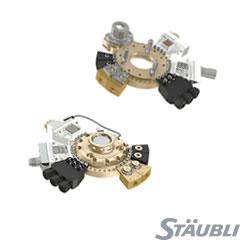Imagine a world, where Tiny robots can go inside your body, see whats wrong it with and target therapies only for that area. Here are 3 Tiny Robots to make you believe your imagination could come true.
Three Tiny Robots that Could Change Healthcare
Contributed by | Idgax
Imagine a world, where Tiny robots can go inside your body, see what’s wrong it with and target therapies only for that area. Here are 3 Tiny Robots to make you believe your imagination could come true.
Biots (Biobots):
Rashid Bashir, a bio Engineer at the University of Illinois, Urbana-Champaign, & his team debuted a biobot made with skeletal muscle, the same kind found in limbs, which suggests biobots could be controlled precisely for complex activities.
Popular Mechanics explains that the researchers created their new 6-mm-long biobots using 3D printers. First they printed scaffolds made of a hydrogel similar to the polymer material making up soft contact lenses, creating a bench-like structure consisting of stiff pillars connected by a flexible plank. Next they deposited living rat skeletal muscle cells, which formed a strip of muscle connecting both feet of the scaffold's pillars. In experiments, the scientists placed their biobots in lab dishes filled with a warm, electrically conductive fluid. When the dishes were zapped with a series of electrical pulses, the biobots moved by inching across the dishes at rates of a little more than one-third of an inch per minute.
Robot Tentacle :
Iowa State University team comes up with extremely gentle micro-tentacle that can lasso an ant without killing it which has very interesting implications for micro-surgeries.
Alphr explains that the tentacle is crafted from polydimethylsiloxane (henceforth referred to as PDMS for the sake of our overworked sub-editors), a silicone compound that’s both cheap and soft. The PDMS is moulded into hollow tubes that curl when air is extracted. One side of the tube is thinner than the other to ensure that the tentacles curl in a uniform way for precise grabbing.
Micro-Machines :
A team of researchers from the University of California has published a study describing the first successful tests, within a living creature, of nano-robots intended to carry and disperse drugs within the body.
Io9 explains that these researchers constructed polymer tubes coated with zinc which were a mere 20 micrometers long (width of a strand of human hair). Once implanted in the gut of a live mouse, the zinc reacted to the acid in the stomach by producing bubbles of hydrogen, which propelled the nanobots into the stomach lining. Once attached, they began to dissolve, thereby delivering their nanoparticle contents within the stomach tissue.
About Idgax
Idgax publishes collections of cutting edge research & technologies.
The content & opinions in this article are the author’s and do not necessarily represent the views of RoboticsTomorrow
Comments (0)
This post does not have any comments. Be the first to leave a comment below.
Featured Product

